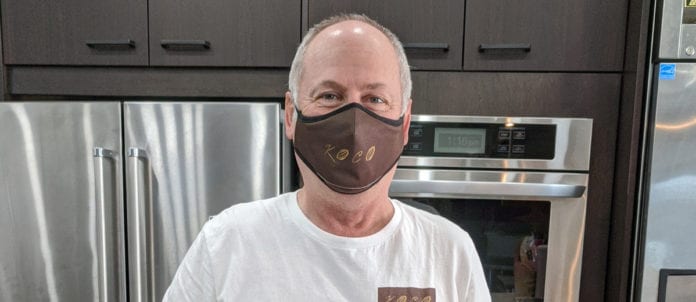If you’re looking for John Placko, you’ll likely find him doing a solo act at his recently established production kitchen. These days, the modern cuisine guru is working on his newest chocolate-making venture — a passion for Placko since his early culinary days.
Known for his championing of molecular-gastronomy ingredients, the Australian-born Placko has enjoyed a thriving career in restaurant consulting, workshops and events. His edible helium balloons are just one of many show-stopping creations he’s introduced over the years.
Placko discovered the joys of texturizing ingredients more than a decade ago. “Modern cuisine became my focus. I was getting a bit bored with regular cuisine, but was always fascinated by the science related to cooking and all the techniques and equipment. I wanted to demystify the whole thing and show people it wasn’t just about weird and crazy cuisine in [high-end] restaurants.”
With his roaming academy, consulting and event activities, Placko had his hands full — until it all came to a crashing halt with the arrival of COVID-19 last March. “I thought I was well diversified. I realized I wasn’t at all when everything stopped.”
When culinary arts teacher and a Chopped Canada winner Keith Hoare reached out to him to help collect surplus inventory for delivering to food banks, everything changed for Placko. “They needed to clear out the fridges at Humber [College] when it shut down so they asked us to come and pick up non-perishable products and get it to the foods banks. But there was nowhere take the perishables.”
That was the beginning of a grand venture to prepare meals for food banks and shelters. “It snowballed from there. We were inundated with products from restaurants, colleges, distributors and hotels.”
At their height, the two chefs and their wives worked from home, producing up to 500 meals a day, seven days a week to reach a grand total of more than 50,000 meals. “It was non-stop. We were going full on for six months. When the perishables began to run out, we started coordinating large donations and finding homes for them at food banks.”
The pair has also managed to strike deals with some food distributors to warehouse skids of donated food items, where they are sorted and picked up by the food banks.
Placko admits he has no specific visions on how the industry is going to bounce back. “There is so much unknown in all this.”
In the meantime, Koco, his chocolate-making venture, has grown from a small sideline for family members and friends to filling hundreds of orders for local business and associations. Now, he’s working on a signature Boomerang collection dedicated to showcasing Australian ingredients.
On the positive side, Placko says the pandemic has really “pushed him into the food-bank world and how they work. We now support 15 different food banks in the area.”
An equally important mission for Placko is keeping perishable food out of landfill. He estimates their efforts to date have stopped upwards of $1-million worth of food going to landfill sites. “It’s not a food-safety issue. In many cases it’s a quality issue about consistency or colour. Companies are actually paying someone to dump that stuff when it could be used for a good cause.”
He glances over to a rack that contains un-opened boxes of tartlet shells donated by a distributor that were close to use-by date. “I have plans for those. Something with custard and fruits, perhaps. What I really want all the distributors and foodservice folks out there to know is that we are happy to pick those items up and put them to good use.”
Written by Denise Deveau


















